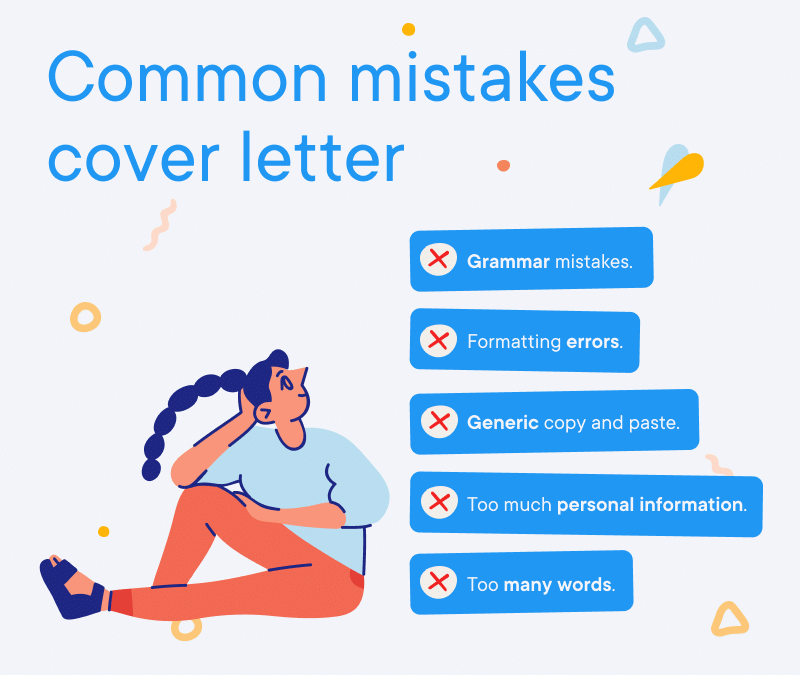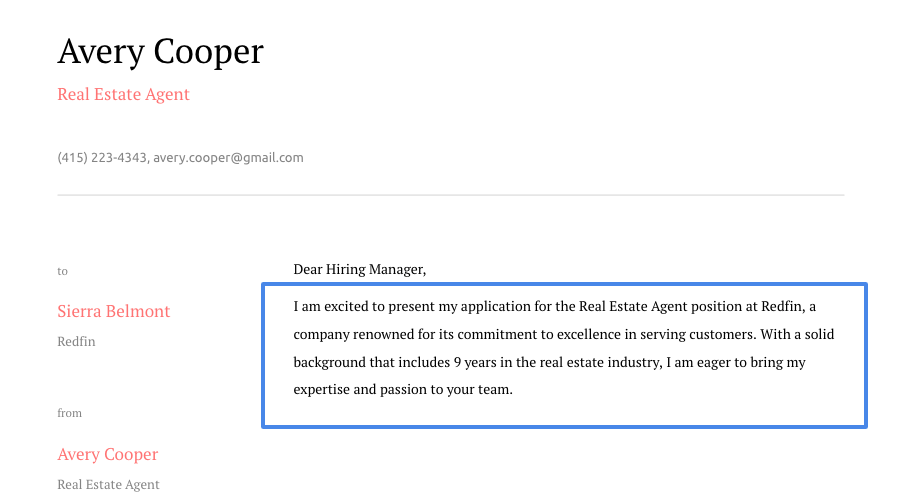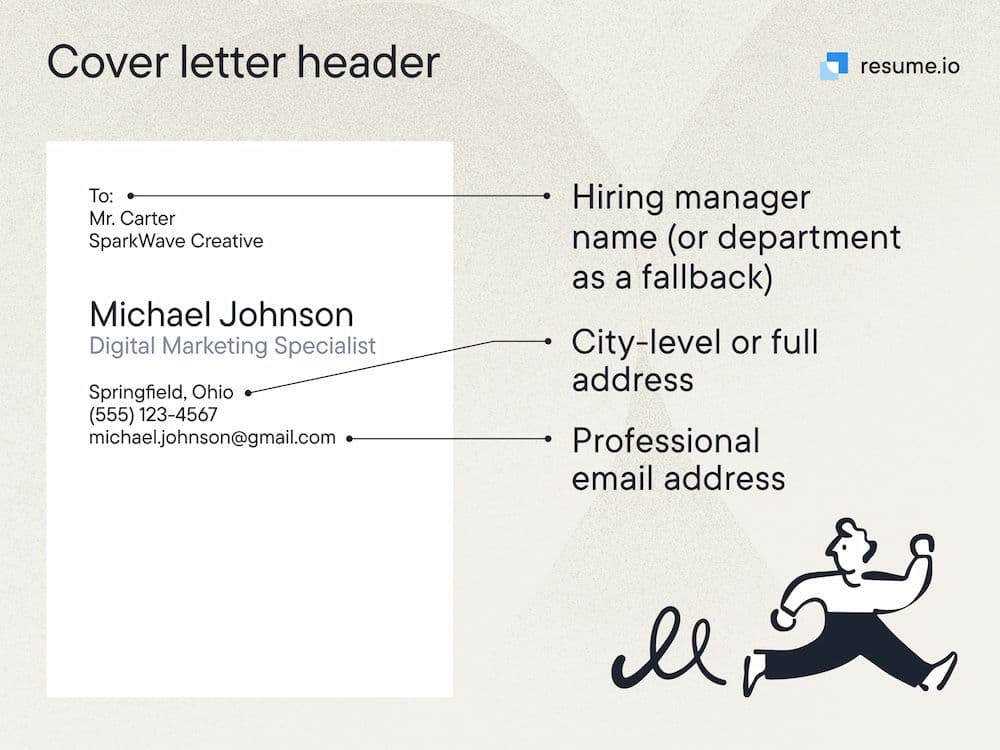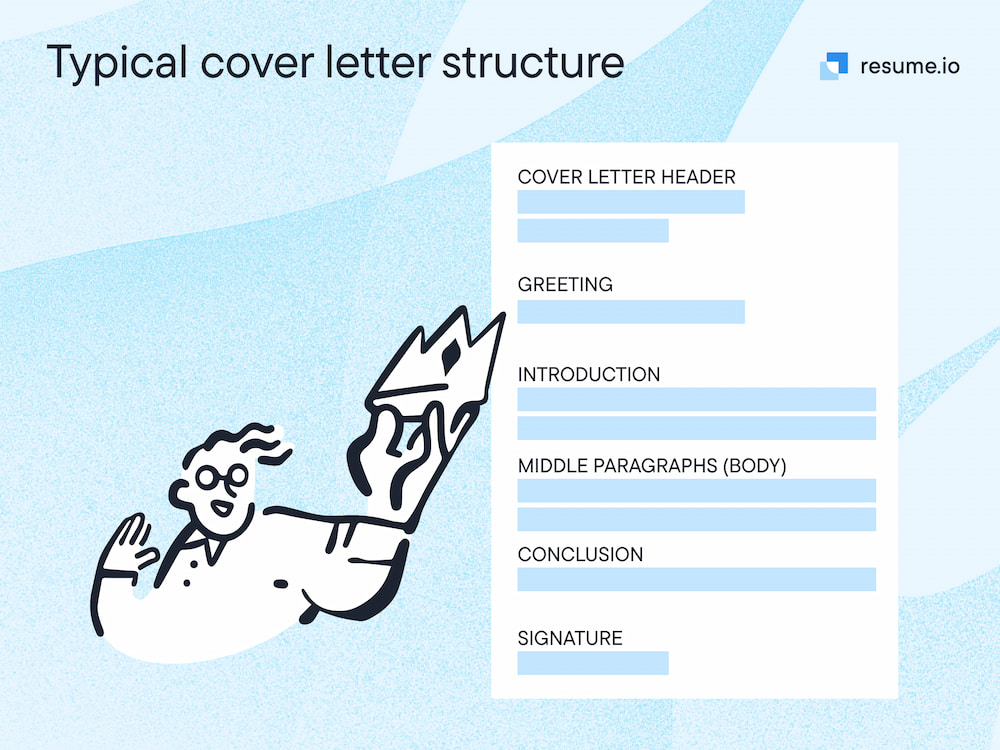Are cover letters outdated? What are employers looking for in cover letters? Can they actually land you an interview?
These are all good questions and, fortunately, we have the data to answer them. We’ve compiled some insightful statistics that reveal the secrets of modern cover letter writing to capture a hiring manager’s attention.
Keep reading to discover over 50 cover letter statistics that you can use to your advantage during your job search.
Cover letter statistics you should know
Cover letters have long been an essential part of the hiring process, but they often get less attention than resumes and interviews. In a tight job market, however, a standout cover letter might just be the difference between landing an interview or getting passed over.
When done well, a cover letter can showcase your personality, connect your experience to the role, and show an employer why you’re the best candidate for the job. The statistics below shed some light on why you should give your cover letter the attention it deserves.
Should you send a cover letter?
It’s common for job seekers to wonder: Do I even need to submit a cover letter with my application?
These statistics show the value of writing a cover letter for your application:
1. Among recent new hires, 35.4% consistently submitted cover letters with every application, while 42.5% wrote cover letters for some, but not all. (Jobscan)
2. According to the same survey, only 6.1% of applicants never wrote a cover letter for a single application. (Jobscan)
3. Among those who never submitted a cover letter, only 21.2% received job offers. On the other end of the spectrum, 35.8% of candidates who always wrote cover letters got hired. (Jobscan)
4. In one poll of 450 hiring managers, 24% said they read every cover letter, while 35% read at least some cover letters. (Josh Bob, career coach)
5. Executives who review applications pay close attention to cover letters. About 90% say that cover letters are invaluable for evaluating candidates and deciding who to interview. (Top Resume)
6. Another survey of over 10,000 recruiters found that nearly one-third (31%) take cover letters into consideration when making hiring decisions. (Tracy Saunders, BossMakeHer)
7. Some employers make submitting a cover letter optional. In those cases, it’s a good idea to include one anyway, since about 79% of employers say they read them even if they don’t require one. (Jobera)
8. About half (49%) of hiring managers say that attaching a cover letter to your resume can improve your job chances. (TeamStage)
9. Even if it’s listed as optional, 72% of recruiters expect to receive cover letters. (Arcadia University)
10. Think a cover letter doesn’t matter that much? Think again. Up to 81% of hiring managers have rejected applicants after reading their cover letters. (Zety)
11. Nearly half (45%) of hiring managers say that not including a cover letter could lead them to automatically reject an application. (Zippia)
12. Smaller companies may be more likely to review cover letters, according to one survey. Among technology companies, 65% of start-ups required cover letters, compared to 55% of medium-sized companies and 48% of giant tech corporations. (Ladders)
Cover letter content statistics
There’s enough data to suggest that it’s wise to send a cover letter with your resume, even if an employer doesn’t explicitly require one. But how do you write a cover letter that employers want to read?
Let’s look at what the experts say:
13. A cover letter should fit on one page and be no longer than 400 words. Keep it short and sweet—no fluff necessary. (resume.io)
14. Many employers (70%) prefer cover letters that are one-half page or less. (Zippia)
15. Employers want to hire enthusiastic candidates, and 47% wouldn’t offer a job to someone who doesn’t know anything about the company. Show that you’ve done your homework by incorporating specific details about the company into a cover letter. (Twin Employment and Training)
16. Besides company knowledge, your cover letter should offer examples of how you’ve used your skills and abilities to achieve positive outcomes in past jobs. 36% of employers look for candidates who show evidence of multitasking skills, while 31% look for applicants with initiative. (Twin Employment and Training)
17. Other research shows that 35% of hiring managers disregard cover letters that don’t mention candidates’ skills. (TeamStage)
18. Another big reason some employers automatically reject applicants? Typos. Around 58% of employers toss cover letters with obvious mistakes. (TeamStage)

19. Your cover letter should explain why you want the job. In one survey of human resources (HR) professionals, 63% say they want to learn about candidates’ motivations for applying. (Arcadia University)
20. Other recruiters (27%) say that their top expectation for a cover letter is connecting a candidate’s work experience to the job’s duties and demands. (Zety)
21. Referrals matter, so mention them in a cover letter if you have this mutual connection. When reading cover letters, 19% of employers specifically look for referrals. (Zety)
22. Including a referral in your cover letter can significantly boost your chances. According to one study, one in six candidates (17%) who are referred to a role get hired, compared to only 7% of traditional, non-referred applicants. (ERIN)
23. Your introduction needs to make an impact immediately. For 41% of hiring managers, the introduction is the most important part of a cover letter. (Jobera)

Cover letter strategy statistics
What do employers and hiring managers expect to see in cover letters, and how can you use this knowledge to your advantage?
Use this data to inform your cover letter writing strategy:
24. Just like with a resume, you need to write a cover letter with applicant tracking system (ATS) software in mind. Research shows that ATS software can eliminate up to 50% of candidates before a human recruiter ever reads a resume or cover letter. (Interview Success Formula)
25. One easy way to set your cover letter apart is to address the hiring manager or recruiter by name. 26% of hiring managers say that this small detail goes a long way. (TeamStage)
26. A cover letter can be a powerful tool in your job search strategy. 83% of hiring managers say that a well-written cover letter can help candidates overcome a weak or generic resume. (Arcadia University)
27. Don’t assume that an employer will always review your resume first. While some do, 36% of hiring decision-makers say they start with the cover letter. (Arcadia University)
28. You have a short window of time to get an employer’s attention. About 37% of recruiters only spend 30 seconds reading a cover letter, while 15% say they spend two minutes or longer reviewing cover letters. (Jobera)
29. Around 38% of hiring managers pay closer attention to applications with cover letters. Make sure that your cover letter is focused, specific, and tailored to the role. (Zippia)
Can a cover letter get you an interview?
Along with your resume, a cover letter is a key part of moving forward to the next phase of the hiring process.
This data shows the importance of a cover letter in getting you to the interview stage:
30. You’re 1.9 times more likely to land an interview if you include a cover letter with your application. When competing with applicants who have similar qualifications, a memorable or creative cover letter can make you stand out. (Jobscan)
31. In one survey, 80% of recruiters say they receive “junk” resumes on job boards, so they use cover letters to identify legitimate, qualified applicants. Take the time to craft both a targeted resume and a custom cover letter for your applications. (Tracy Saunders, BossmakeHer)
32. For every open job, employers get an average of 118 applications, but only 20% of applicants get an interview. A well-written cover letter can be your ticket to moving forward. (Interview Success Formula)
33. Half (50%) of hiring managers say that cover letters are useful for explaining career changes. (Arcadia University)
34. Recruiters also believe that cover letters can help candidates address employment gaps (49%) and showcase your professional achievements (47%). (Arcadia University)
35. An overwhelming majority of employers (87%) say they consider cover letters when deciding which candidates to invite for interviews. (Zety)
The future of cover letters
While it’s impossible to predict how the use and importance of cover letters may change in the future, we can look at some recent trends for guidance.
Here are a few statistics related to the future of cover letters in the hiring process:
36. Many candidates are already using artificial intelligence (AI) to write their cover letters, and this trend is expected to continue. One survey found that 11% of applicants say they’ve used AI to create their cover letters. (Salt)
37. Based on another survey, it’s likely that far more candidates are using AI in their job search. Around 65% of candidates say they’ve used this technology, including 20% who use AI to write their cover letters. (CNBC)
38. It’s not just job seekers who are using AI. In 2025, 72% of HR professionals are now using AI in their hiring processes, up from 58 percent one year ago. (HireVue)
39. Most talent acquisition professionals (73%) believe that AI will fundamentally change the way companies recruit and hire employees. (LinkedIn)
40. Video interviewing continues to rise in popularity, with 63% of employers now using video in the hiring process. In the future, pre-recorded videos may accomplish the same goal as resumes and cover letters: introducing yourself to hiring managers. (LLCBuddy)
41. Nearly half of employers believe that a cover letter is still an essential part of job applications, even as trends like video and AI disrupt the traditional hiring process. In one poll, 43% said that applicants should submit cover letters. (Chris Morrison, Meritos)
General cover letter & job search statistics
Cover letters are only one small part of the broader job search process.
Here are some general statistics to keep in mind as you navigate your job search:
42. Finding a new job doesn’t happen overnight. Recent data shows that the average job seeker spends 23.2 weeks searching for their next opportunity. A well-crafted cover letter has the potential to shorten your job search duration. (US Bureau of Labor Statistics)
43. Most resumes don’t get past an applicant tracking system, with 75% being rejected before they reach a hiring manager. Make your cover letter and resume ATS-friendly with relevant keywords from the job description. (TopResume)
44. Over 70% of employees say they’re open to new opportunities that come their way. Always have an updated version of your cover letter ready to go in case a recruiter reaches out unexpectedly. (TopResume)
45. One survey found that 78% of job seekers had lied at some point during the hiring process, including on resumes, in cover letters, and during interviews. Among those, 60% admitted they’d claimed to have skills they didn’t actually have. (PRNewswire)
46. An unprofessional email address is a big turnoff for 35% of prospective employers. Your cover letter and resume header should have a professional email using a combination of your name or initials, such as firstname.lastname@email.com. (Motley Fool)

47. Including quantifiable metrics in your resume and cover letter can make you stand out from other applicants. Only 26% of candidates include some measurable data on their resumes. (Cultivated Culture)
48. The average job description contains 43 keywords that you can use on your cover letter and resume. (Cultivated Culture)
49. Hiring managers see buzzwords and jargon on many applications, saying that 51% of resumes contain these overused phrases. Keep your resume and cover letter free of cliches, like “team player” and “hard worker.” (Cultivated Culture)
50. Nearly all (93%) of hiring decision-makers want to assess candidates’ skills to improve their quality of hires. Your cover letter and resume should emphasize the strengths, skills, and talents that you can bring to the role. (LinkedIn)
Cover letter best practices
A great cover letter goes beyond your resume to add context, personality, and enthusiasm to your application.
Here are some additional tips for writing a standout cover letter for your next job application:
Customize your letter
Don’t send the same generic cover letter for every job. Before applying, take a few extra minutes to customize the letter to the role and employer. For example, you can mention the company’s mission or its recent projects.
Address the hiring manager by name
If you can, find the name of the hiring manager and address your cover letter directly to them. Use their full first and last name, such as “Dear Melissa Stockton.” If you’ve searched but can’t find this information, use “Dear Hiring Manager” instead of other outdated greetings, like “ Dear Sir or Madam” or “ To Whom It May Concern.”
Open with a strong introduction
The first paragraph of your cover letter should immediately captivate a recruiter and make them want to keep reading. Open with an impressive professional achievement or metric that captures your value.
Keep it concise
Hiring managers don’t have time to read lengthy cover letters, so keep yours to one page. Most cover letters have three to four paragraphs for an introduction, a body, and a conclusion.

Match the company’s culture and tone
A tech start-up will have a much different environment than a legal office. Make sure that your cover letter reflects the company’s culture and tone. This extra step can help prospective employers see you as a good fit for their team.
Include a call to action
At the end of your cover letter, close with a strong call to action. Encourage the recruiter to contact you for an interview. For example, you may write, “I look forward to discussing my experience in more detail at an interview.”
Proofread carefully
Before you send an email or hit submit on your application, proofread your letter carefully for grammar errors or spelling mistakes. Even small typos on your letter can take you out of the running, so make sure that yours is clean and accurate.
- Jobscan.co
- LinkedIn.com (Josh Bob)
- TopResume.com (When Is a Cover Letter Necessary?)
- BossMakeHer.com
- Jobera.com
- TeamStage.io
- Arcadia.edu
- Zety.com
- Zippia.com
- TheLadders.com
- TwinEmployment.com
- ERINapp.com
- Interview Success Formula.com
- WeLoveSalt.com
- CNBC.com
- HireVue.com
- Business.LinkedIn.com
- LLCBuddy.com
- LinkedIn.com (Chris Morrison)
- BLS.gov
- TopResume.com (The Job-Search Statistics All Job Seekers Should Know)
- PRNewswire.com
- Fool.com
- CultivatedCulture.com






